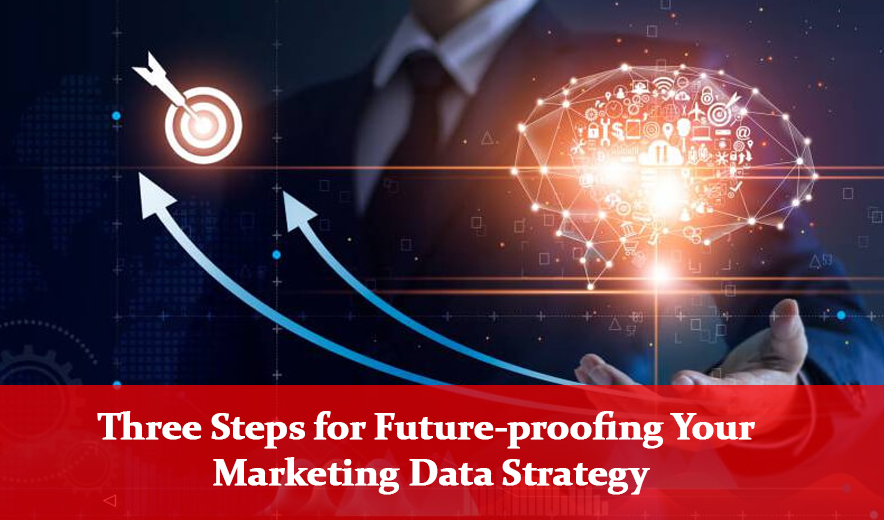In the fast-paced and constantly changing digital environment of today, data has emerged as the crucial foundation for effective marketing strategies. Companies that harness the power of data gain a competitive edge, but to stay ahead in the long run, it’s essential to future-proof your marketing data strategy. This article will guide you through three crucial steps to ensure your marketing data strategy remains effective, adaptable, and ready for the challenges of tomorrow.
Introduction: The Importance of a Future-Proof Marketing Data Strategy
In an era where information flows at the speed of light, having a robust marketing data strategy is not just a luxury—it’s a necessity. Your ability to collect, analyze, and utilize data effectively can determine the success or failure of your marketing campaigns. However, as technology advances and consumer behavior changes, your strategy must be adaptable to remain relevant. Let’s delve into the steps required to future-proof your marketing data strategy.
Embrace Data Governance
1. Define Clear Data Ownership
To ensure the longevity of your data strategy, it’s crucial to establish clear data ownership within your organization. Define who is responsible for collecting, maintaining, and updating the data. Assign roles and responsibilities to individuals or teams to avoid data ambiguity and duplication. This not only enhances data quality but also streamlines decision-making processes.
2. Implement Data Quality Standards
The effectiveness of your marketing endeavors is directly influenced by the quality of your data. Implement stringent data quality standards, including data validation, cleansing, and enrichment. Perform routine data audits to pinpoint and correct any inconsistencies. Clean and accurate data ensures that your marketing campaigns are built on a solid foundation.
3. Ensure Compliance with Data Regulations
Data privacy regulations like GDPR and CCPA have raised the bar for data handling and protection. To future-proof your strategy, ensure compliance with these regulations and stay updated on any changes. Failing to comply can lead to hefty fines and damage your brand’s reputation. Give precedence to data security as a means to establish trust with your customers.
Impact of First-Party Data on Marketing
First-party data, which is directly collected from your customers, is becoming increasingly valuable as third-party data becomes less reliable due to privacy concerns and regulations. Incorporating first-party data into your marketing data strategy can enhance personalization, customer targeting, and overall campaign effectiveness.
Three Steps to Define Your Marketing Data Strategy
The source emphasizes the importance of defining your marketing data strategy comprehensively. It suggests three essential steps:
1. Assessment
Begin by assessing your current data strategy and identifying gaps and weaknesses. Understand your data sources, data quality, and the tools you use for data management.
2. Alignment
Align your data strategy with your business goals and objectives. Ensure that your data collection and analysis efforts are in sync with your marketing objectives. This alignment ensures that your data strategy directly contributes to achieving business success.
3. Execution
Implement your data strategy with precision. This includes selecting the right technology, establishing data governance processes, and fostering a data-centric culture within your organization. Execution is where your data strategy becomes a tangible asset that drives results.
Invest in Scalable Technology
1. Adopt Cloud-Based Solutions
The blog also highlights the importance of adopting cloud-based solutions in your data strategy. Cloud platforms offer scalability and flexibility, allowing you to store and access data effortlessly. Additionally, they facilitate seamless integration with other tools and technologies, making it easier to adapt to changing marketing needs.
2. Leverage Artificial Intelligence and Machine Learning
Artificial intelligence (AI) and machine learning (ML) are not just buzzwords; they are powerful tools for data analysis and prediction. The source suggests incorporating AI and ML algorithms into your marketing data strategy to gain insights, automate repetitive tasks, and make data-driven predictions. These technologies can help you stay ahead of the curve in a rapidly evolving landscape.
3. Explore Predictive Analytics
Predictive analytics, as mentioned in the source, leverages historical data and AI algorithms to forecast future trends and customer behavior. By embracing predictive analytics, you can proactively adjust your marketing strategies, ensuring they remain relevant and practical. Maintain a competitive edge by foreseeing changes in the market.
Foster a Data-Centric Culture
1. Educate Your Team
The blog emphasizes the importance of a data-centric culture within your organization. Similar to the source, it suggests providing continuous training and education on data-related topics to your team. Equip your employees with the skills to interpret data and make informed decisions. When everyone understands the value of data, they are more likely to contribute to its quality and usability.
2. Encourage Data-Driven Decision-Making
Encourage a culture where decisions are based on data rather than intuition alone, aligning with the source’s recommendation. Create a data-driven decision-making process that involves analyzing data before implementing marketing strategies. This approach minimizes risks and maximizes the chances of success.
3. Establish Feedback Loops
Feedback loops, as highlighted in the source, are essential for continuous improvement. Collect feedback from your marketing campaigns and use it to refine your data strategy. Regularly assess the performance of your data-driven initiatives and be willing to adapt based on the results.
Conclusion
Future-proofing your marketing data strategy is not a one-time task; it’s an ongoing commitment. By embracing data governance, investing in scalable technology, fostering a data-centric culture, and considering the impact of first-party data, you can ensure that your strategy remains effective in the face of evolving challenges. Stay ahead of the competition, gain deeper insights into your target audience, and drive more impactful marketing campaigns.
Be a part of our community for free and access the best resources, trends, and new technologies from peers and industry experts. You can also check out our other awesome blogs over here.





